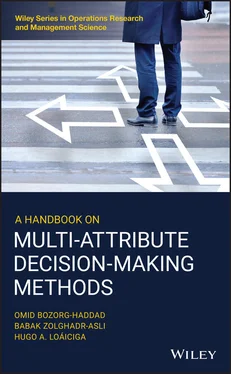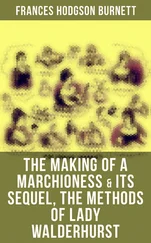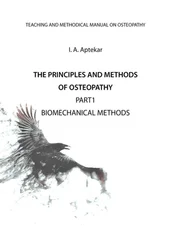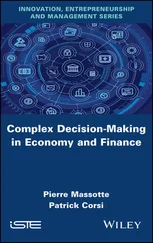MODM problems describe a situation in which decision‐makers are searching for a set of solutions that would satisfy the constraints imposed on the given problem and obtain results that constitute an optimal set of solutions based on the decision‐makers objectives (Hwang and Yoon 1981). In essence, MODM is suitable for tackling design and planning problems, in which the decision‐makers aim to achieve states objectives or goals by considering the various interactions within the given constraints. The decision space of MODM problems can be described as a multidimensional Cartesian space, with each (conflicting) objective acting as an axis, defined by a set of constraints that separate the feasible and infeasible solutions. MODM can solve problems with continuous or discrete decision spaces. MODM solution methods are usually associated with mathematical programming methods (Tzeng and Huang 2011).
In general, MODM involve trade‐off and scale problems (Tzeng and Huang 2011; Zolghadr‐Asli et al. 2018a). MODM involves more than one objective, therefore, the optimal solutions to a MODM problem must be posed in terms of Pareto fronts or production possibility frontier (after the Italian economist Vilfredo Pareto 1848–1923), which are sets of points representing combinations of the values of the objective functions with the best tradeoffs among objectives that are achievable for the problem being solved. In classic MODM techniques, an optimal solution is commonly obtained with mathematical programming. This means multiple objectives are merged into a single‐objective problem through a weighting of the various objectives. The process of obtaining a proper weighting scheme for the objectives is a trade‐off problem. If such trade‐off information is unavailable, Pareto solutions must be derived. Pareto solutions to MODM problems are expressed as a set of nondominated solutions. A nondominated solution has the property that it is not possible to improve the solution’s utility or degree of preference without degrading at least one objective (Zolghadr‐Asli et al. 2017, 2018a). The MODM’s scaling problem, on the other hand, is a computational challenge surrounding most real‐world, practical, decision‐making problems, whereby the stakeholders must consider several conflicting objectives. As the number of objectives increases the decision makers face the curse of dimensionality , whereby the computational costs of solving a MODM problem become burdensome in the extreme, and sometimes computationally unassailable (Bozorg‐Haddad et al. 2017; Zolghadr‐Asli et al. 2017, 2018a). In an attempt to surmount this challenge, meta‐heuristic algorithms have arisen to search within the decision‐space and identify potential solutions to a MODM problem (Bozorg‐Haddad et al. 2017, Zolghadr‐Asli et al. 2018b, c, d).
MADM problems describe a situation in which the decision‐makers evaluate a finite number of predefined alternatives. The alternatives are known at the beginning of the solution process. The decision‐makers attempt to systematically assess each alternative via a discrete preference rating mechanism. The rating mechanism used by decision‐makers to evaluate and compare the performance of each of the alternatives under consideration is defined either explicitly or implicitly (Hwang and Yoon 1981). Table 1.1compares the main characteristic of MCDM approaches, namely, MODM and MADM (Malczewski 1999; Mendoza and Martins 2006; Tzeng and Huang 2011; Velasquez and Hester 2013).
Table 1.1 Comparison of MODM and MADM approaches.
| Criteria for comparison |
MODM |
MADM |
| Criteria defined |
Objectives |
Attributes |
| Objective defined |
Explicitly |
Implicitly |
| Attributes defined |
Implicitly |
Explicitly |
| Constraints defined |
Explicitly |
Implicitly |
| Alternatives defined |
Implicitly |
Explicitly |
| Number of alternatives |
Infinite |
Finite |
| Decision‐makers’ control |
Significant |
Limited |
| Decision modeling paradigm |
Process‐oriented |
Outcome‐oriented |
| Relevant to |
Design/operation |
Evaluation/choice |
Nowadays, decision‐makers have numerous methods and techniques at their disposal to deal with MCDM problems, ranging from simple, easy‐to‐use approaches to complex techniques. Given the important role of MADM, it is vital for decision‐makers to know the merits and drawbacks of MADM methods. This book introduces some of the fundamental MADM methods that have been proven to be effective and practical solution‐searching tools. Section 1.2describes the foundations of MADM methods and their classification.
1.2 Classification of MADM Methods
There are numerous ways through which one can classify the MADM methods. A sound classification relies on the core principles and assumptions of MADM to categorize these methods. Familiarity with MADM methods is paramount to choose adequately among them to solve a decision problem at hand. Accordingly, based on the decision‐makers’ prioritizing system, the interactions among attributes, the mathematical nature of attributes’ values, and the number of decision‐makers, numerous classifications have been proposed for MADM methods.
1.2.1 Preference Evaluation Mechanism
Every MADM method requires a preference evaluation mechanism for the purpose of reflecting the stockholders’ preferences in the decision‐making process. These mechanisms act as a measure that enables decision‐makers evaluating alternatives according to their attributes. The mechanism can be defined either explicitly (where the preference values are computable through a set of predefined boundaries or mathematical functions), or they can be defined implicitly so that the decision‐makers’ experiences, expertise, perception, and instincts are reflected in the alternatives’ preference evaluation.
A classification based on the notion of preference evaluation mechanism divides MADM methods into multiattribute utility theory (MAUT) and outranking methods (Belton and Stewart 2002; Mendoza and Martins 2006). On the basis of Bernoulli’s utility theory MAUT methods obtain the decision‐makers’ preferences, which can usually be represented as a hierarchical structure by using an appropriate utility function. By evaluating the utility function the alternative with the highest utility value can be identified as the solution to the MADM problem at hand. In spite of their reliance of solid axiomatic background of MAUT methods, they are criticized by their unrealistic assumption of preferential independencies (Tzeng and Huang 2011). Preferential independence describes situations in which the preferred outcome of one criterion over another is not influenced by the remaining criteria. However, it so happens that the criteria are usually interactive in real‐world MADM problems. Alternatively, instead of building complex utility functions, outranking methods compare the preference relations among alternatives to determine on the best alternatives. The outranking methods were introduced to overcome the empirical difficulties experienced with the utility function in handling practical problems. Yet they lack axiomatic foundation, such as is the case with classical aggregate problems and structural problems (Tzeng and Huang 2011).
The previous classification categorizes classical MADM methods, yet it may face difficulties categorizing some of the modern MADM methods whose features do not fit either one of the previously cited categories. Belton and Stewart (2002) proposed a more sophisticated classification system for MADM methods that addresses the latter classification difficulties. The alternate classification categorizes the MADM methods within three classes, namely, value measurement, goal aspirations or reference level, and outranking methods. This classification is a reviewed next.
Читать дальше












